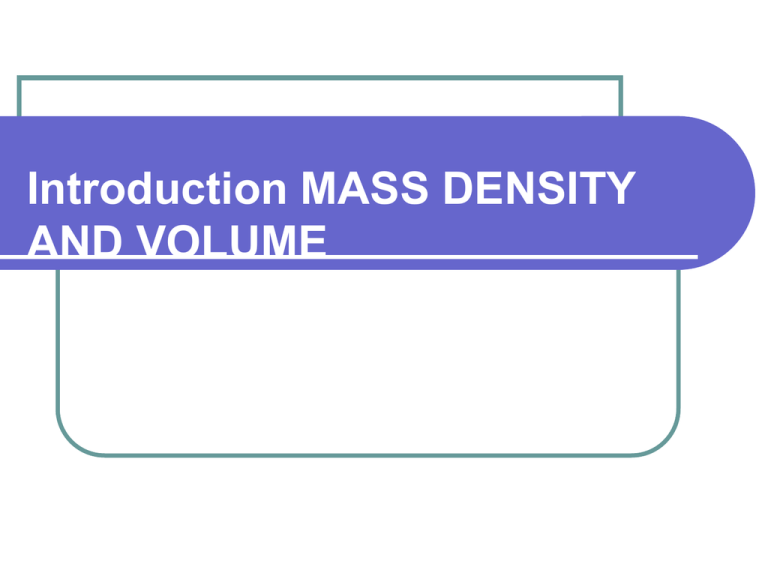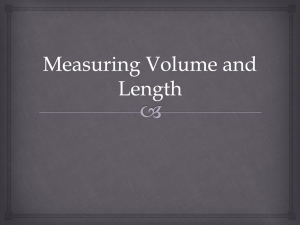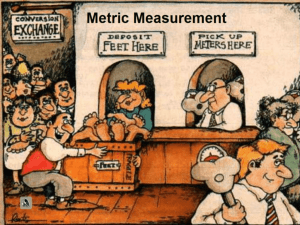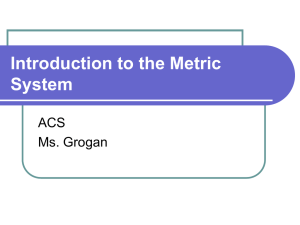Mass, Volume and Density
advertisement

Introduction MASS DENSITY AND VOLUME Measuring Mass Mass - the quantity of matter in an object standard unit is gram (g) Measured using a digital scale or triple beam balance Measuring Volume and Capacity Volume - the amount of space occupied by an object standard unit is liter (L) 1 L = 1000 ml = 1000 cm3 = 1 dm3 Measured using a graduated cylinder Capacity - a measure of the volume inside a container Measuring Volume Measured with a graduated cylinder Determine value of each mark on the scale Read scale using the lowest position of the meniscus Measure the meniscus at eye level from the center of the meniscus. In the case of water and most liquids, the meniscus is concave. Mercury produces a convex meniscus. Displacement Displacement Amount of water an object replaces Equal to its volume Volume of a Solid, Irregular Object Displacement - amount of water an object replaces Procedure Place graduate beaker beneath spout Fill the overflow can with water until water begins to spill Empty the excess water Place object to be measured into the overflow can Remove when water stops flowing out of the can Measure the displaced water using a graduated cylinder. Volume of a Solid, Irregular Object Displacement Calculate the difference between the initial and final volume measurement. Volume of a Solid, Regular Object Volume - length x width x height V = 2.8 cm x 3.2 cm x 2.5 cm V = 22.4 cm3 Measured with a ruler Calculating Density Density - a specific property of matter that is related to its mass divided by the volume. D=M/V the ratio of mass to volume used to characterize a substance each substance has a unique density Units for density include: g/mL g/cm3 g/cc Measuring Time Time metric unit is second (s) Measuring Temperature Temperature the degree of “hotness” of an object standard unit is celsius (°C) measured with a thermometer Temperature Conversions Conversion Between Fahrenheit, Celsius, and Kelvin Example: Convert 75 ºC to ºF Convert -10 ºF to ºC Measurement Unit Conversion You can convert between units of measurement within the metric system between the English system and metric system Conversion and the Metric System ACS Ms. Grogan Measurement Unit Conversion You can convert between units of measurement within the metric system between the English system and metric system Unit Conversion Let your units do the work for you by simply memorizing connections between units. Example: How many donuts are in one dozen? We say: “Twelve donuts in a dozen.” Or: 12 donuts = 1 dozen donuts What does any number divided by itself equal? ONE! Unit Conversion This fraction is called a unit factor Multiplication by a unit factor does not change the amount - only the unit. Example: How many donuts are in 3.5 dozen? You can probably do this in your head but try it using the Factor-Label Method. Unit Conversion Rules Start with the given information… Then set up your unit factor… See that the original unit cancels out… Then multiply and divide all numbers… Unit Conversion Practice Example: Convert 12 gallons to units of quarts. Unit Conversion Practice Example: Convert 4 ounces to kilograms.







